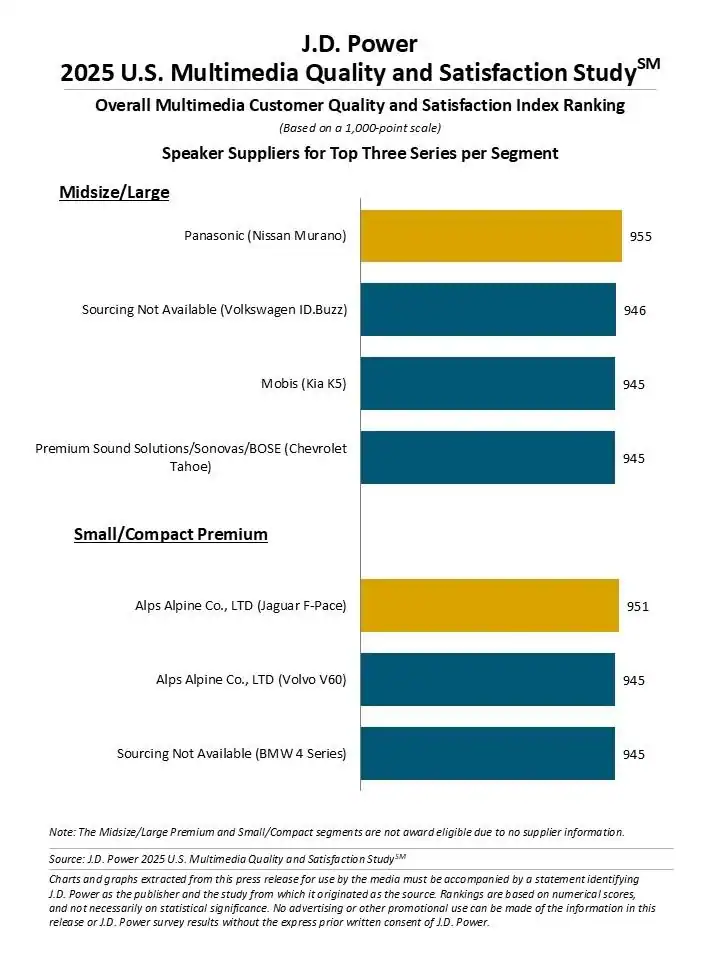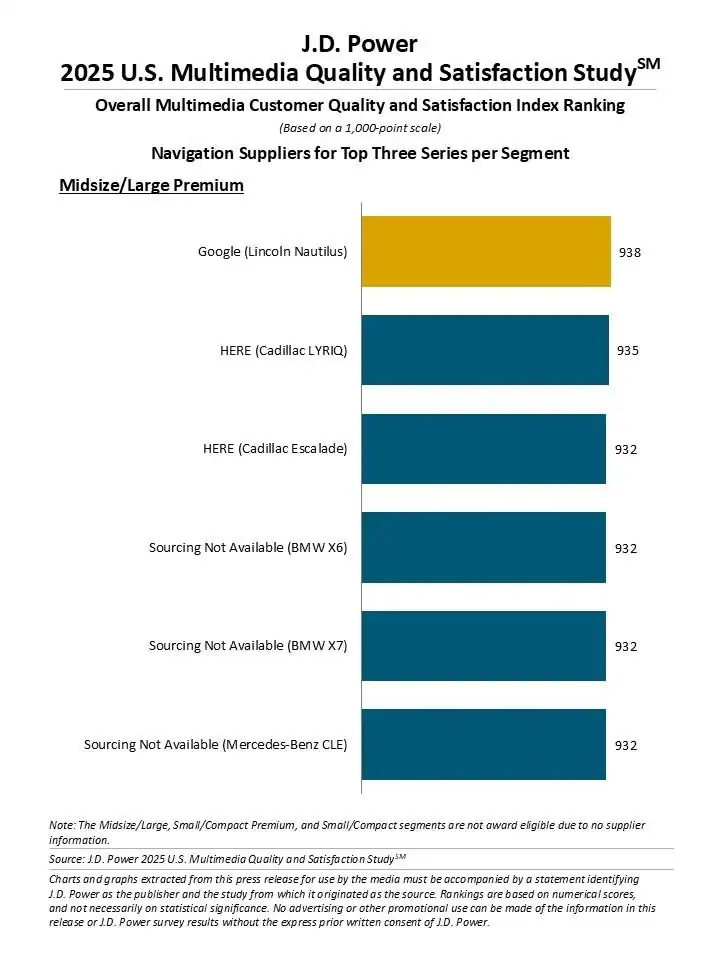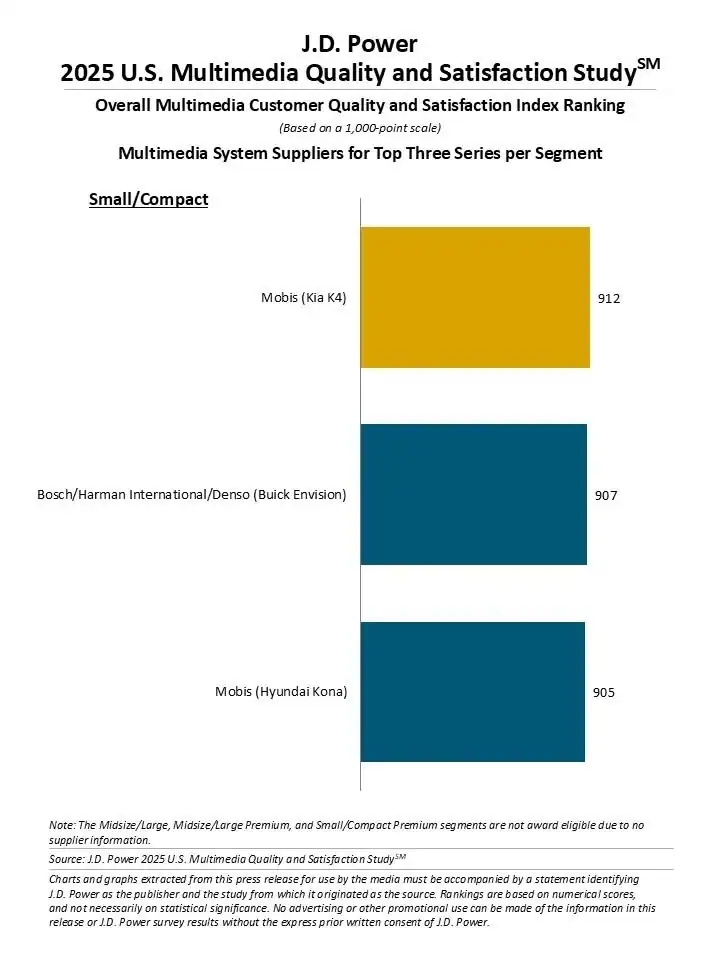




Fewer Problems, But Not Enough Progress
The study reports that multimedia-related issues have declined to 42.3 problems per 100 vehicles (PP100), compared with 44.1 PP100 in 2024. This marks progress in how manufacturers are addressing technology quality, yet the numbers still highlight that multimedia remains one of the biggest sources of complaints among new car owners.
In fact, five of the top 10 most frequently cited issues in the 2025 study are related to multimedia. The most notable area of concern is touchscreen and digital display performance, which saw an increase in reported issues. Problems rose to 4.2 PP100 in 2025, up from 4.0 PP100 the previous year, suggesting that while overall multimedia systems are improving, the core interaction between drivers and their vehicle’s primary control interface remains problematic.
The Challenge of the Digital Cockpit
“As automakers accelerate toward fully digital cockpits, we’re seeing a clear shift in consumer expectations as larger touchscreens are now the norm, but intuitive use has been inconsistent,” said Lisa Boor, senior manager of auto benchmarking and mobility development at J.D. Power. “Vehicle owners desire technology that is easy to use and minimizes distractions while driving. User frustration builds when controls are confusing and screens are cluttered. Data shows that a blend of touchscreen and physical buttons enhances usability – the goal isn’t simply fewer buttons, but also intuitive design.”
This observation captures a critical tension in modern automotive design. Automakers are racing to install bigger, brighter, and more feature-rich displays in vehicles, often in response to consumer demand for smartphone-like interfaces. However, complexity and poor user experience are undermining the promise of these systems.
Drivers want streamlined access to features like navigation, climate control, and media, but they also expect minimal distraction from the road. The data from J.D. Power reinforces a growing consensus that a hybrid approach—offering both touchscreen controls and physical buttons for key functions—is the best way forward.
Leaders in Multimedia Quality
Despite these ongoing challenges, some brands are standing out for their ability to deliver multimedia systems that meet or exceed customer expectations. According to the 2025 study, the highest-ranked vehicles in multimedia quality and satisfaction by segment are:
- Midsize/Large: Nissan Murano
- Midsize/Large Premium: BMW X6
- Small/Compact: Kia K4
- Small/Compact Premium: BMW X4
These models represent the top performers when it comes to minimizing multimedia-related issues and delivering systems that drivers find more intuitive and reliable. BMW’s strong showing in both premium categories highlights the automaker’s emphasis on user experience in its digital cockpit design, while Nissan and Kia demonstrate that mainstream brands can also excel in this area.
Insights From Nearly 93,000 Owners
The 2025 U.S. Multimedia Quality and Satisfaction Study is based on survey responses from 92,694 purchasers and lessees of new 2025 model-year vehicles. Participants were surveyed after 90 days of ownership, providing a snapshot of early experiences with their vehicles.
The study was conducted from June 2024 through May 2025, covering a broad range of brands and models across the U.S. automotive market. This large sample size offers an authoritative perspective on how drivers are adapting to new in-car technologies and where automakers still need to improve.
In-vehicle technology is no longer a niche feature—it has become one of the most important aspects of vehicle ownership. Today’s drivers expect seamless smartphone integration, responsive displays, intuitive navigation, and infotainment systems that enhance the driving experience rather than distract from it.
With infotainment now serving as the central hub for many essential functions, including safety features and connectivity, problems in this area have a disproportionately large impact on overall vehicle satisfaction. Automakers that get it right can win over customers and build loyalty, while those that lag behind risk alienating buyers.
Looking Ahead
As automakers continue to push toward more connected and autonomous vehicles, the role of multimedia systems will only grow in importance. Digital cockpits are no longer just a convenience; they are central to how drivers interact with their cars.